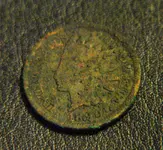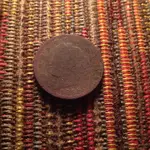TrpnBils
Hero Member
- Joined
- Jan 2, 2005
- Messages
- 870
- Reaction score
- 1,234
- Golden Thread
- 1
- Location
- Western PA
- 🥇 Banner finds
- 1
- 🏆 Honorable Mentions:
- 1
- Detector(s) used
- CTX 3030
- Primary Interest:
- Metal Detecting
Did a quick search on here but couldn't find what I was looking for.... and let's get this out of the way too - I have no intention of selling this coin...it's a common date IHP worth about $5 for a good, non-dug coin. I know cleaning "devalues" but I'd rather it look good in my collection, which is where it's going to stay.
I dug an 1890 IH penny yesterday that I initially thought was so corroded I wouldn't even be able to get a date off of it. When I got home I soaked it for a few minutes, scrubbed it lightly with some dish soap and a soft toothbrush (based on recommendations from the IHP king himself, "Goes4Ever" on his website). Turns out, it's in quite good shape on the obverse (the reverse is pretty worn), minus several rough, raised green areas. The numbers on the date are very distinct around the edges, and the Liberty is visible, so it'd be nice if I was able to get rid of this crap that's on the front.
I've tried peroxide in the past but every time I do I'm always left with something worse than when I started (never turns out like everybody's "before and after" comparisons I see on the forums from time to time. Beyond that, any other suggestions?
I dug an 1890 IH penny yesterday that I initially thought was so corroded I wouldn't even be able to get a date off of it. When I got home I soaked it for a few minutes, scrubbed it lightly with some dish soap and a soft toothbrush (based on recommendations from the IHP king himself, "Goes4Ever" on his website). Turns out, it's in quite good shape on the obverse (the reverse is pretty worn), minus several rough, raised green areas. The numbers on the date are very distinct around the edges, and the Liberty is visible, so it'd be nice if I was able to get rid of this crap that's on the front.
I've tried peroxide in the past but every time I do I'm always left with something worse than when I started (never turns out like everybody's "before and after" comparisons I see on the forums from time to time. Beyond that, any other suggestions?
Upvote
0





